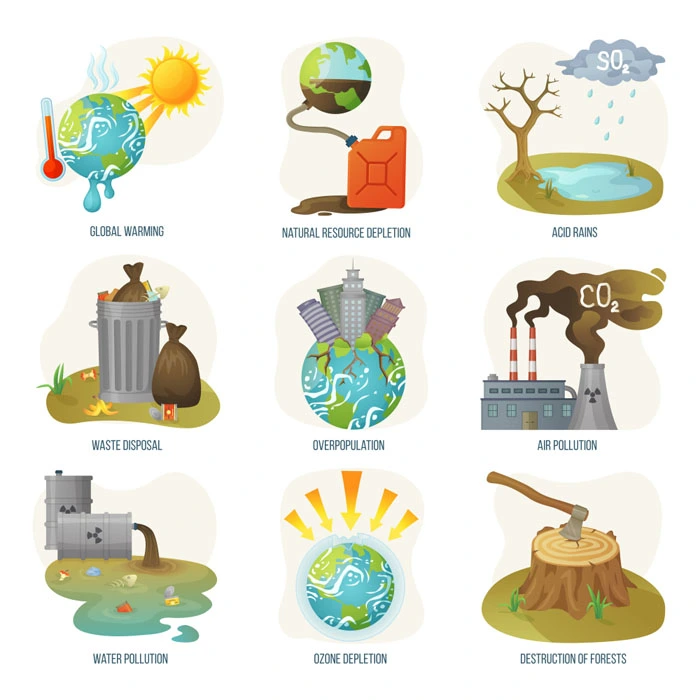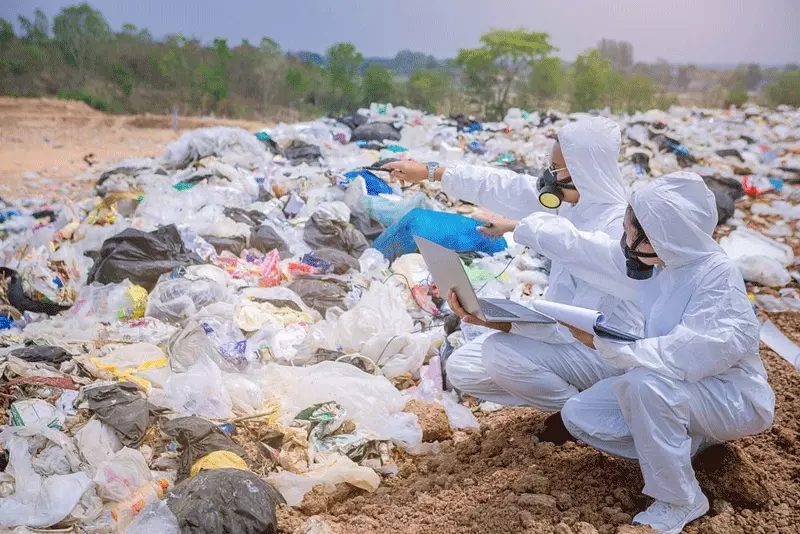As an eco-conscious individual, have you ever wondered about the environmental repercussions of disposable coveralls? In a world where plastic waste has become an escalating concern, it’s high time we consider every aspect of our consumption, down to the clothes we wear. Dig into this fascinating exploration as we unravel the environmental impact of disposable coveralls and offer you sustainable alternatives. We’re not just hanging tough – we’re hanging with intent to save our planet.
How do disposable coveralls affect the environment?
Using disposable coveralls has significant negative environmental impacts due to their production process, disposal methods, and contribution to waste. They release toxic additives and greenhouse gases during production and contribute to landfills when disposed of improperly. At Tough Hook, we offer reusable quality plastic hangers that help extend the life span of coveralls and reduce wastage. We encourage using sustainable approaches such as reusable coveralls as a more environmentally friendly alternative.
Environmental Implications of Disposable Coveralls Production
Disposable coveralls, widely used in various industries such as healthcare, chemical, and construction, have significant environmental implications throughout their production lifecycle. From the extraction of raw materials to the manufacturing process and eventual disposal, each step leaves a footprint on the environment.
Let’s start with the raw materials used in disposable coveralls. Most commonly, these garments are made from synthetic materials such as high-density polyethylene (HDPE) or spunbond-melt-blown-spunbond polypropylene (SMS PP). The production of these materials involves energy-intensive processes and relies heavily on fossil fuels. This reliance on non-renewable resources contributes to greenhouse gas emissions and exacerbates climate change.
Learn About: Protect Yourself with Disposable Coveralls

Manufacturing of Disposable Covers
Consider the energy required to produce just one disposable coverall: from oil extraction for HDPE or refining petroleum for SMS PP to the multiple stages of material processing and assembly. Multiply this energy consumption by the millions of coveralls manufactured annually, and we can begin to grasp the scale of the environmental impact.
Furthermore, the manufacturing process itself involves water consumption and chemical usage. Water is crucial for fiber production, dyeing, printing, and finishing. The extraction and purification of water can strain local resources and ecosystems, especially in regions already facing water scarcity challenges.
Regarding chemical footprint, disposable coverall manufacturing utilizes a range of chemicals like surfactants, bleaching agents, solvents, dyes, and flame retardants. These chemicals pose potential risks to worker health during manufacturing processes and have adverse effects on aquatic ecosystems when discharged as wastewater.
Contaminated wastewater can contaminate rivers, lakes, and oceans, harming marine life and contributing to water pollution.
The environmental implications of disposable coveralls extend beyond their initial production. We must also examine the challenges of waste generated from their manufacturing processes.
- Disposable coveralls have a significant environmental impact throughout their production lifecycle. Each step leaves a footprint on the environment, from the extraction of non-renewable resources to the manufacturing process and eventual disposal. Their production involves energy-intensive processes, water consumption, and chemical usage, posing potential risks to worker health during manufacturing processes and adverse effects on aquatic ecosystems when discharged as wastewater. Therefore, exploring more sustainable alternatives to minimize environmental damage is crucial.
Chemical Footprint of Coverall Manufacturing
Disposable coverall production generates significant waste, adding to the already alarming levels of global plastic pollution. Disposing coveralls after single-use exacerbates this problem, as most end up in landfills or incinerators.
Each year, millions of disposable coveralls are discarded worldwide. Made predominantly from synthetic materials, these items do not readily biodegrade in natural environments. Over time, they break down into smaller microplastic particles that can persist in the background for hundreds of years.
The improper disposal of these coveralls poses risks to terrestrial and aquatic ecosystems. When disposed of in landfills, they contribute to the generation of greenhouse gases through anaerobic decomposition. Additionally, some disposable coveralls may end up incinerated, releasing toxic pollutants into the air and contributing further to air pollution.
Some argue that incineration provides a solution by converting waste into energy. While it reduces the volume of waste in landfills and produces power, it also releases harmful emissions such as nitrogen oxides and dioxins unless modern incineration facilities are equipped with proper emission controls. Thus, incineration alone is not a foolproof solution to mitigate the environmental impact of disposable coverall waste.
Understanding the environmental implications throughout the entire lifecycle of disposable coveralls is crucial for making informed decisions regarding their use and exploring alternatives that minimize negative impacts on our planet.
- Disposable high-density polyethylene (HDPE) coveralls can consume up to 34% more process energy and 23% more natural resource energy than reusable counterparts.
- Single-use polypropylene coveralls produce up to 57% more greenhouse gas emissions and consume 77% more blue water than reusable options.
- Using disposable coveralls generates an alarming volume of solid waste, recording a 94-96% increase in landfill contributions compared to reusable cleanroom coverall systems.
Waste Challenges from Disposable Coveralls Production
The production of disposable coveralls presents significant waste challenges that adversely affect the environment. These challenges arise from various coverall life cycle stages, including raw material extraction, manufacturing processes, distribution, and disposal. To understand the environmental impact comprehensively, let’s explore each step in detail.
At the outset, extracting raw materials necessary for producing disposable coveralls contributes to environmental degradation. Manufacturing typically involves petroleum-based plastics, such as high-density polyethylene (HDPE) or spunbond-meltblown-spunbond polypropylene (SMS PP). These materials require significant energy inputs and produce greenhouse gas emissions during their production.
Consider the extraction of crude oil required to produce HDPE coveralls. This process depletes finite natural resources and leads to ecosystem disruptions and habitat destruction. The release of pollutants and greenhouse gases associated with oil extraction further contributes to climate change and air pollution.
The manufacturing stage has a bad impact
Large amounts of energy are consumed in transforming raw materials into disposable coveralls. This includes energy-intensive processes like extrusion, spinning, weaving, and cutting. Water consumption is also a concern in this phase due to cleaning and cooling requirements.
Once manufactured, these coveralls are transported to various locations for distribution. This process entails additional energy consumption from vehicles, resulting in greenhouse gas emissions and contributing to air pollution. Furthermore, the packaging used for shipping disposable coveralls often involves single-use plastics or cardboard materials that add to solid waste concerns.
The final step in the life cycle of disposable coveralls is their disposal after use. Due to their non-biodegradable nature, these products primarily end up in landfills or are incinerated. Both options pose significant environmental risks. Landfilling exacerbates space constraints while potentially leaching harmful chemicals into soil and water systems over time. Incineration releases toxic pollutants into the air and contributes to air pollution.
To further illustrate the magnitude of waste challenges from disposable coveralls production, consider the following statistics:
| Waste Challenge | Impact |
| Landfill Space | Disposable coveralls occupy significant landfill space worldwide. |
| Leaching of Chemicals | Non-biodegradable coveralls can potentially leach pollutants into soil and water systems. |
| Air Pollution | Incineration of disposable coveralls releases toxic pollutants into the atmosphere. |
| Depletion of Natural Resources | Extraction of raw materials like crude oil depletes finite natural resources. |
| Climate Change | Manufacturing processes for disposable coveralls contribute to greenhouse gas emissions. |
The waste challenges presented by disposable coverall production shed light on the urgent need for sustainable alternatives that reduce environmental impact and promote a circular economy. However, it is not just the environment that suffers from these products; human health is also at risk due to various factors associated with disposable coveralls.
Impact of Disposable Coveralls on Human Health
Disposable coveralls can directly impact the health of those who work with and wear them. While their primary purpose is to protect individuals from hazardous substances or contaminants, certain aspects of these garments can pose risks to human health.
Firstly, many disposable coveralls are made from synthetic materials such as polyethylene or polypropylene, which may emit volatile organic compounds (VOCs) during their use. These VOCs can contribute to indoor air pollution, leading to potential respiratory issues or allergic reactions among individuals wearing them for extended periods.
- Imagine a chemical manufacturing plant worker wearing a disposable coverall made from synthetic materials for several hours each day. The release of VOCs into the air within an enclosed space increases the chances of inhaling harmful substances, potentially leading to respiratory illnesses or aggravated symptoms in individuals with pre-existing conditions.
- Additionally, the production and disposal of disposable coveralls contribute to the overall pollution burden on communities. The extraction of raw materials, manufacturing processes, and incineration or landfilling releases pollutants into the environment, impacting air quality and potentially affecting nearby communities’ health.
Furthermore, using disposable coveralls can create psychological stress for workers who fear exposure to contaminants despite their protective attire. This constant anxiety and fear can harm mental health, increasing stress levels or reducing job satisfaction.
Factors that increase the risks of poor health
While it is important to acknowledge the potential risks associated with disposable coveralls on human health, it is worth noting that these risks can vary depending on factors such as the specific materials used, adherence to safety protocols, and individual susceptibility. It is also crucial to consider that disposable coveralls are designed to provide necessary protection from various hazards in many industries. Consequently, balancing safety requirements and minimizing potential health risks remains a key consideration.
Understanding the impact of disposable coveralls on human health reinforces the need for sustainable alternatives prioritizing worker safety and well-being. By exploring innovative solutions and embracing more environmentally friendly practices, we can work towards mitigating these potential risks and promoting a healthier future.
Direct Health Hazards for Coverall Workers
As we delve into the environmental impact of disposable coveralls, it is crucial to address the direct health hazards the workers face. The very purpose of these coveralls is to protect against hazardous substances such as chemicals, pathogens, and other contaminants. However, several risks need to be considered.
One significant concern is the potential for exposure to harmful chemicals in the materials used to manufacture disposable coveralls. Many of these coveralls are made from synthetic materials like polypropylene or polyethylene, which can release volatile organic compounds (VOCs) when worn or disposed of. Prolonged exposure to VOCs can lead to respiratory problems, skin irritation, and even long-term health issues.
Additionally, the inadequate breathability of some disposable coveralls can cause discomfort and heat stress for workers. These garments often lack proper ventilation, trapping moisture and heat close to the body. This can lead to discomfort and increase the risk of heat-related illnesses such as heat exhaustion or heat stroke.
Moreover, workers wearing disposable coveralls may face difficulties with mobility and agility. Some designs restrict movements due to their snug fit or limited flexibility, hindering the worker’s ability to perform tasks effectively and safely. This decrease in mobility can impact productivity and potentially compromise safety protocols.
The use of disposable coveralls also raises concerns about waste management. These single-use garments create significant plastic waste in landfills or incinerators. Improper disposal practices can harm terrestrial and aquatic ecosystems by releasing toxic additives and contributing to pollution.
It is important to note that while disposable coveralls have drawbacks, they serve a valuable purpose in certain scenarios where contamination risks are high, such as in medical procedures or hazardous material handling. In such cases, appropriate disposal methods and safety protocols must be implemented to mitigate the negative impact.
Imagine a scenario where healthcare workers wear disposable coveralls while attending to patients with infectious diseases. While the risk of contamination is high, proper disposal methods and protective measures must be in place to safeguard both the workers and the environment.
Now that we have discussed the direct health hazards associated with wearing disposable coveralls let us focus on comparing these single-use garments with reusable coveralls.
Examination of Disposable vs Reusable Coveralls
When considering the environmental impact of coveralls, evaluating both disposable and reusable options is essential. On one hand, disposable coveralls offer convenience and reduce infection risks in certain situations. However, their ecological footprint raises concerns.

Reusable Coveralls
Reusable coveralls provide a more sustainable alternative. These garments are designed to withstand multiple uses and undergo proper cleaning and disinfection between each wear. Reusable coveralls help minimize resource consumption and waste generation by reducing the need for constant replacement. This results in lower energy consumption, greenhouse gas emissions, and water usage throughout their life cycle.
Reusables also offer advantages in terms of worker comfort due to their improved breathability and flexibility compared to some disposable options. Enhanced mobility allows for better task performance and reduces potential risks associated with restricted movement.
However, it is important to consider that implementing reusable coverall programs requires additional resources for laundering and maintenance. Proper cleaning procedures must be followed diligently to ensure effective decontamination, which can increase water consumption and energy usage during the washing process.
Which one is better?
Ultimately, the choice between disposable and reusable coveralls should be made based on a comprehensive assessment of individual circumstances, including cost considerations, contamination risks, utilization frequency, and environmental impact. The decision should prioritize both worker safety and long-term sustainability.
Now that we have examined the environmental aspects of disposable and reusable coveralls let’s explore how Life Cycle Assessment (LCA) can comprehensively analyze their sustainability performance.
Life Cycle Assessment Discourse: Disposable vs Reusable
When examining the environmental impact of disposable coveralls, it is crucial to consider the concept of a Life Cycle Assessment (LCA). This assessment evaluates the environmental impact of a product throughout its entire life cycle – from raw material extraction and manufacturing to use, disposal, and potential recycling or reuse.
An LCA allows us to compare the environmental implications of disposable coveralls versus reusable alternatives. Let’s look at each life cycle stage to understand the discourse between these two options better.
Starting with raw material extraction and manufacturing, disposable coveralls often rely on non-renewable resources like petroleum-based synthetic materials. These materials require significant energy consumption during production and generate greenhouse gas emissions. On the other hand, reusable coveralls typically involve more durable materials like cotton or polyester blends that can be laundered and reused numerous times, reducing the need for constant production.
Next, we consider the use phase. Disposable coveralls are designed for single use and are discarded after one wear. This generates substantial waste and contributes to landfill buildup. The energy required to produce each new set of disposable coveralls increases. When treated with proper care and maintenance, reusable coveralls can be worn multiple times before reaching the end of their usable life. This reduces waste generation and extends the overall lifespan of the product.
Disposal coveralls and end-of-life considerations
Disposable coveralls often find their way into landfills, contributing to environmental pollution and potential leaching of harmful substances. While some disposable coveralls can be recycled or incinerated for energy recovery purposes, these processes may have ecological consequences.
On the other hand, reusable coveralls may also impact the environment through laundering processes that consume water and energy and potentially release microplastics into wastewater systems. The overall impact is highly dependent on the efficiency of the laundering process, detergent choices, water usage, and energy sources.
Considering all these factors, it becomes clear that the disposable versus reusable debate is complex. It’s essential to consider the material choices and each product’s durability, maintenance requirements, and end-of-life considerations when assessing their environmental impact.
Now that we have examined the life cycle assessment discourse on disposable versus reusable coveralls let’s explore some sustainable alternatives and future trends in this field.
Sustainable Alternatives and Future Trends
As environmental concerns grow, industries actively seek sustainable alternatives to disposable coveralls. Several emerging trends aim to address the environmental impact while prioritizing worker safety.
One promising avenue is the development of recycled or eco-friendly materials for manufacturing coveralls. This involves using recycled fibers or organic materials in production, reducing reliance on non-renewable resources and minimizing carbon footprints.
Additionally, advancements in manufacturing processes are contributing to more environmentally friendly options. Technologies such as 3D printing and modular construction enable customized and precise production, reducing waste generation while improving efficiency.
Another notable trend is the implementation of closed-loop systems. These systems focus on circular economy principles by designing products that can be easily disassembled, repaired, or recycled at their end of life. This minimizes waste generation and maximizes resource recovery.
Moreover, innovations like smart textiles are gaining traction. These textiles are embedded with sensors or technologies that monitor wear and tear or detect hazardous substances. By providing real-time data on garment conditions or potential exposure risks, these textiles contribute to safer working environments while optimizing product lifespan.
Think of these sustainable alternatives and future trends as a forest slowly regenerating after a fire – new growth emerges that is resilient and better equipped to thrive within its environment.
As technology advances and sustainability becomes a priority, the future of coverall manufacturing holds great potential for more environmentally friendly solutions. Industries need to collaborate and invest in research and development to drive innovation in this direction. By doing so, we can ensure that worker safety remains a top priority while minimizing our ecological footprint.
2 Pack RHINO Heavy Duty Clothes Hanger Bundle
Original price was: $25.95.$23.95Current price is: $23.95.Innovations Pushing Towards Greener Practices
In recent years, there has been a growing recognition of the environmental impact posed by disposable coveralls and an increasing demand for more sustainable alternatives. This has spurred innovations and advancements in the industry as companies strive to develop greener practices and materials. One notable innovation is the introduction of coveralls made from recycled materials. By utilizing materials that have already been in circulation, these companies reduce waste and reduce reliance on new raw materials. For example, some manufacturers have started repurposing plastic bottles or other plastic waste into fibers for overall production.
Imagine a company that collects discarded plastic bottles from oceans and landfills. These bottles are then processed into a fine thread-like material that can be woven into a fabric suitable for making coveralls. This initiative prevents these bottles from ending up in our ecosystems and reduces the need for virgin polyester production, which requires petroleum extraction.
Another innovation pushing towards greener practices in disposable coveralls is developing and using bio-based fibers. Instead of relying on petroleum-derived materials, bio-based fibers are derived from renewable resources such as plants or agricultural byproducts. This shift reduces dependence on fossil fuels and lowers carbon emissions during manufacturing.
Bio-based fibers such as bamboo, hemp, or soy protein can be processed into fabrics that meet the protective standards required for disposable coveralls. These alternatives are biodegradable, meaning they will naturally decompose over time, reducing their impact on landfill waste.
| Innovation | Advantages |
| Use of recycled materials | Reduces waste and reliance on new raw materials |
| Development of bio-based fibers | Reduces dependence on fossil fuels and lowers carbon emissions during manufacturing |
Think of these innovations as steps towards greener practices, similar to how individuals transition from using plastic water bottles to reusable ones. It may seem like a small change, but when multiplied on a larger scale, it can significantly impact the environment.
While these innovations are commendable, some critics argue that instead of making disposable coveralls more sustainable, efforts should be directed toward promoting reusable coveralls. Reusable coveralls made from durable materials can be washed and reused multiple times, significantly reducing waste production and environmental impact in the long run.
It is essential to acknowledge that each approach has merits and limitations. In situations where disposable coveralls are necessary due to contamination risks or specific industry requirements, integrating recycled materials and bio-based fibers can help minimize the environmental footprint.
Overall, the advancements in creating greener practices in the disposable coverall industry showcase companies’ commitment to sustainability. By embracing innovations such as recycled materials and bio-based fibers, they are taking proactive steps to reduce waste and lessen dependence on non-renewable resources. These changes bring us closer to a more sustainable future where protection needs can be met without compromising environmental well-being.
Frequently Asked Questions
How can industries reduce the environmental impact of using disposable coveralls?
Industries can invest in reusable alternatives, improve recycling programs, or reduce overall usage.
Do biodegradable disposable coveralls exist?
Some coveralls are marketed as biodegradable, but their decomposition rates and environmental safety can vary.
Is incinerating disposable coveralls better than landfilling them?
Incineration can reduce landfill space but may release harmful emissions. It’s essential to weigh the environmental pros and cons.
Can disposable coveralls be repurposed or upcycled?
While challenging, creative solutions might repurpose used coveralls, depending on their condition and contamination level.




 Firstly, many disposable coveralls are made from synthetic materials such as polyethylene or polypropylene, which may emit volatile organic compounds (VOCs) during their use. These VOCs can contribute to indoor air pollution, leading to potential respiratory issues or allergic reactions among individuals wearing them for extended periods.
Firstly, many disposable coveralls are made from synthetic materials such as polyethylene or polypropylene, which may emit volatile organic compounds (VOCs) during their use. These VOCs can contribute to indoor air pollution, leading to potential respiratory issues or allergic reactions among individuals wearing them for extended periods.

















